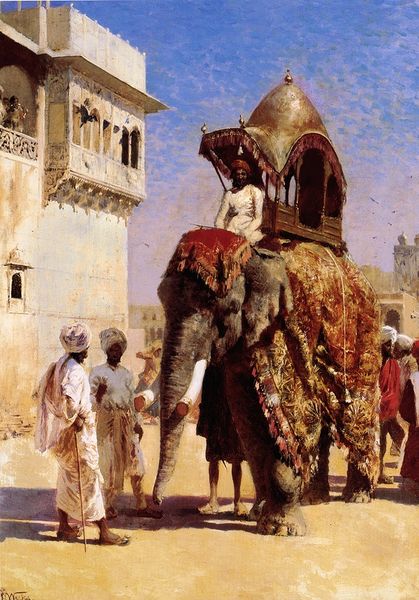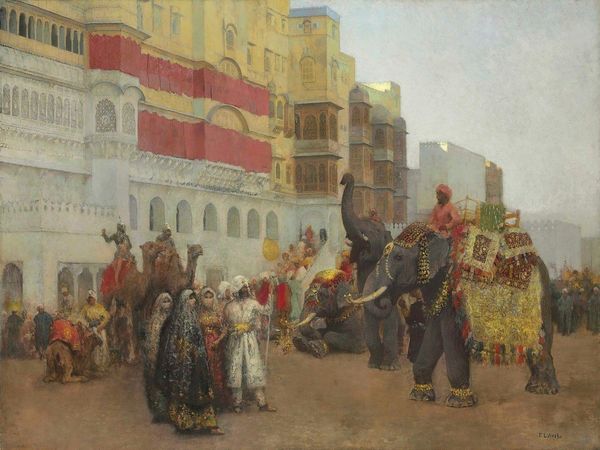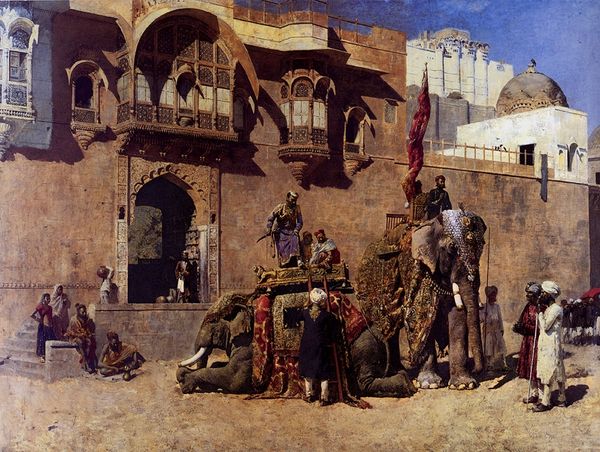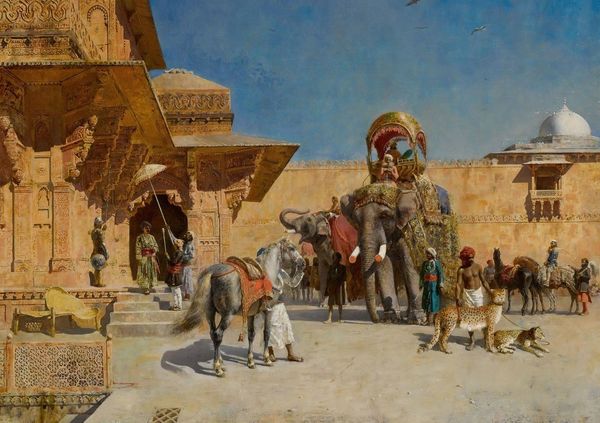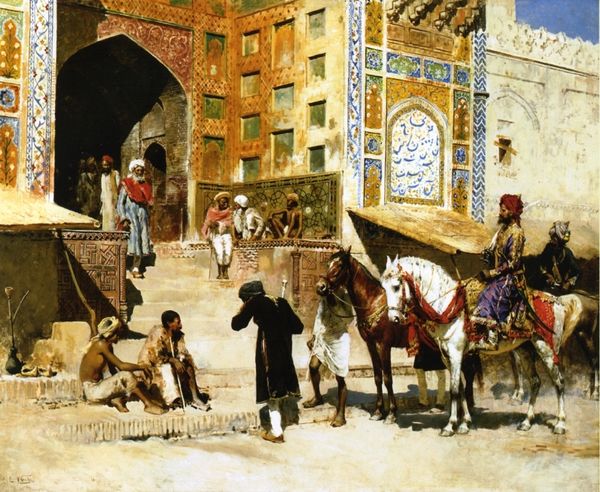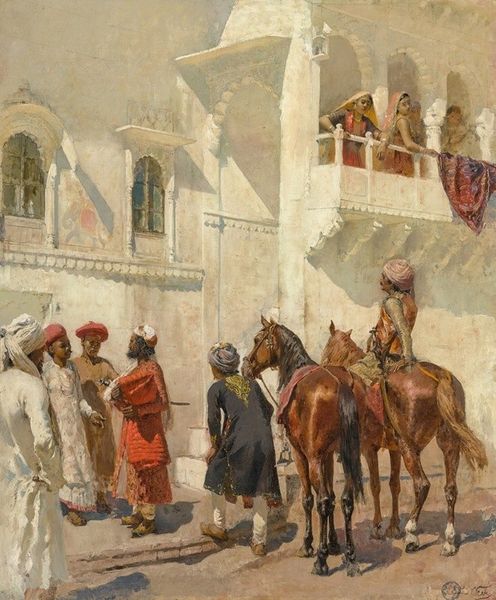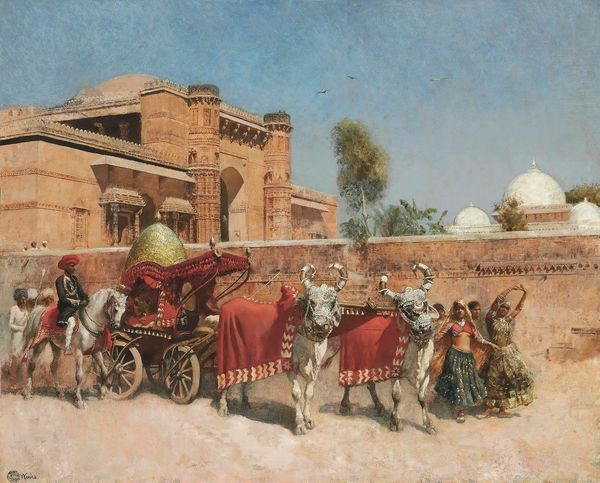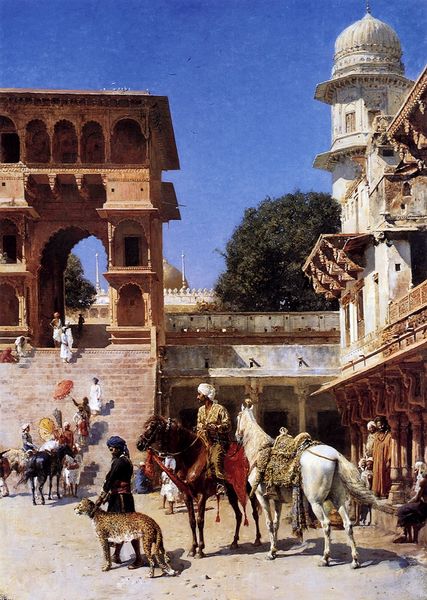
Great Mogul And His Court Returning From The Great Mosque At Delhi, India 1886
0:00
0:00
edwinlordweeks
Private Collection
painting, oil-paint
#
portrait
#
animal
#
painting
#
oil-paint
#
asian-art
#
landscape
#
oil painting
#
group-portraits
#
orientalism
#
horse
#
islamic-art
#
genre-painting
#
academic-art
Dimensions: 85.4 x 137.8 cm
Copyright: Public domain
Curator: Edwin Lord Weeks’ “Great Mogul and His Court Returning From The Great Mosque At Delhi, India,” created in 1886, offers us a glimpse into the grandeur of the Mughal empire. Editor: It's striking. The procession, with those massive elephants, dominates the foreground, immediately grabbing the eye. You can almost feel the weight of the scene through the thickly applied oil paint. Curator: Weeks, a prominent figure in Orientalist art, situates this scene within a complex power dynamic, drawing from Western fascination with the East during the colonial era. This painting, through its opulent portrayal, arguably reinforces existing hierarchies and stereotypes of the 'exotic' Orient. How do you view that relationship here? Editor: Looking at it materially, the scale suggests not just opulence, but the logistics involved in creating and moving it - the labor of canvas, paint, the frame... and all the human power represented. And consider the elephants; how were they managed, moved, fed, and by whom? The image glorifies the court, but relies on immense amounts of unacknowledged animal and human labor. Curator: Indeed. The medium, oil on canvas, lends itself to that rich detailing and the almost tactile rendering of textures – the silk of the garments, the rough skin of the elephants. It perpetuates the imperial narrative but it also opens conversations about cultural encounters, representation, and artistic license. We can almost feel the climate of that very moment depicted. Editor: The materiality becomes symbolic of a certain power and that has an origin. A kind of political "substance," perhaps. Considering this work, I am interested in how the historical context affects our perceptions. Does it celebrate empire, or simply document it? Curator: It certainly complicates our viewing. While celebrating craft it reveals more broadly questions around cultural depiction and societal inequalities prevalent during this painting's historical time frame and context. Editor: It reminds us that even seemingly straightforward depictions carry a complex history, of how things are made, by whom, for whom, and for what purpose.
Comments
No comments
Be the first to comment and join the conversation on the ultimate creative platform.


